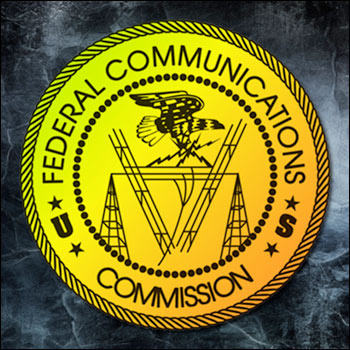
Enactment of federal legislation in 2012 and subsequent FCC proceedings and rulemaking this past year ushered in a new legal dynamic for state and local permitting for certain classes of wireless facilities. Section 6409(a) of the so-called Spectrum Act created “collocation by right” and a national standard to facilitate the rapid build-out of such wireless infrastructure 1. By streamlining the review and approval process at the local and state level for minor installations on towers and other structures, Congress intended to “promote the deployment of the network facilities needed to provide broadband wireless services” in furtherance of its initial foray into the field with adoption of Section 332(c)(7) of the Communications Act adopted some twenty years ago.2
Perhaps not unexpectedly, the FCC initiated a rule making proceeding and published an order in October of 2014 to clarify and implement various rules for applicants and municipal permitting agencies.3 The FCC Wireless Infrastructure Order among other things established detailed criteria and requirements applicable to state and local permitting for “eligible facilities”. In its order, the FCC ruled that:
- Eligible facility modifications can include changes at existing communications tower sites, rooftop facilities and DAS systems, among other types of wireless infrastructure;
- Within 60 days from the date of filing, a State or local government must approve an application covered by Section 6409(a) of the Spectrum Act; and
- A State or local government may only require applicants to provide documentation that is reasonably related to determining whether the eligible facilities request meets the requirements of Section 6409(a) of the Spectrum Act and associated FCC regulations.
The FCC’s implementing regulations were subsequently published and became effective earlier this year.4 Legal challenges from the municipal sector are still pending with oral argument in Montgomery County v. FCC (Case Nos. 15-240 and 15-1284, 4th Circuit) just held on October 28, 2015.
One Year Anniversary of the FCC’s Wireless Infrastructure Order
Last month marked the first anniversary of the FCC’s Wireless Infrastructure Order. While appeals make their way through the courts, we thought a report from the field might help answer the questions being most frequently asked by clients about what the Spectrum Act and FCC Wireless Infrastructure Order have meant in practice since that time. In our experience, Section 6409 and FCC Regulations have achieved a great deal and shifted some of the regulatory burdens onto municipalities when permitting collocation and site modifications that are eligible facilities. Indeed, while the FCC did not completely preempt zoning for eligible facility modifications, the order itself and rationales articulated for the FCC’s regulations have made for a substantially constructive dialogue between the wireless industry and state and local government agencies. This in turn has lead to numerous successes for our clients in further streamlining permitting for eligible facility modifications in jurisdictions we’ve practiced in for over 20 years.
Connecticut
In Connecticut, authority over telecommunications tower facilities rests exclusively with the Connecticut Siting Council, a state agency. Over a decade ago, Connecticut adopted progressive legislation and collocation by right regulations, which are widely known in the industry as “exempt modifications” or “tower sharing requests”. Nevertheless, in 2015 a State legislative bill was presented that would have required Siting Council hearings on all applications it received. Working with our clients and colleagues, we were able to educate legislators about the FCC Wireless Infrastructure Order and ultimately avoided State legislation that would have conflicted with the Spectrum Act.5 That coupled with our representation of the plaintiff in New Cingular Wireless PCS, LLC v. City of West Haven, No. 3:11cv1967, 2013 WL 3458069 (D. Conn. July 9, 2013) in which the court upheld a wireless carriers’ right to municipal permits for a rooftop collocation have preserved and protected the benefits Section 6409(a) of the Spectrum Act provided to the wireless industry.
In 2015, we also successfully advocated in support of a Siting Council interpretation of State statutes and its adherence to the FCC’s Wireless Infrastructure Order related to tower extensions up to twenty feet in height. A year prior, our office had sought an as applied ruling from the Council and in fact obtained approval for a client’s tower extension without the requirement for a public hearing based on Section 6409(a) of the Spectrum Act.6 After the FCC’s order was issued in late 2014, the Siting Council initiated its own proceeding in which we participated formally. The result was a declaratory ruling in March of 2015 that exempts eligible tower modifications from public hearings and streamlines approvals for tower extensions under 20 feet in height.7 The Siting Council now reviews and approves such submissions routinely in a 30-45 day timeframe consistent with its consideration of exempt modifications and tower sharing requests, a substantial reduction in time and cost for permitting eligible facility modifications in Connecticut.
New York
The New York “picture” is a bit more complicated than Connecticut as jurisdiction for towers and non-tower sites rests solely with municipalities. Advocacy for streamlining permitting for eligible facility modifications is generally town by town and case by case. With the support of our clients, we have nevertheless advocated for zoning interpretations and waivers and obtained numerous referrals to the Building Department for administrative approval as part of building permit applications. Candid communications with municipal attorneys, planners, and building officials have been key to our successes and in some cases the results have exceeded expectations. In Yonkers, one of New York’s biggest cities, our telecommunications team successfully represented a client before the Zoning Board of Appeals (ZBA) and obtained a citywide interpretation that eligible facility modifications did not require amended special permit applications or variances and must be processed and approved via an administrative review by City planning staff and the building department. These types of advancements on a local level, yield long term cost savings for the wireless industry above and beyond what federal regulations allow and set important precedents that eligible facility requests should just be administrative review prior to issuance of a building permit.
These New Dynamics Support Further Municipal or State Legislative Action
Upon adoption of the FCC’s regulations in 2015, it seemed logical to conclude that, while Congress did not expressly preempt zoning for eligible facility modifications, municipalities would embrace federal standards and criteria and conform immediately to federal laws. While that has in many instances been true in our experience, there are still numerous municipalities in New York that require zoning, consultant reviews and significant submission requirements for eligible facility modifications. In talking with municipal representatives in such cases, they most often point to their outdated local wireless regulations and zoning as the reason they require zoning permits procedurally versus any true substantive interest in regulating eligible facility modifications.
Petitioning for code changes on a town by town basis is, however, simply not something the wireless industry is prepared to undertake. Additionally, municipalities are unlikely to initiate amendments to their own codes given the time and cost related to legislative revisions. This despite collaborative discussions at continuing legal and planning education events over this past year where Cuddy & Feder attorneys educated municipal officials regarding Section 6409 of the Spectrum Act. (Click here to see a CLE presentation Cuddy & Feder lawyers made recently at Touro Law Center entitled “Planning and Permitting Mobile Broadband Communications Infrastructure: Is It Time to Amend Your Local Code?”) As such, it’s our opinion that state legislation to implement and/or mirror Section 6409 of the Spectrum Act and make eligible facilities “by-right” would be appropriate, cost effective and yield even greater certainty for both applicants and municipalities in states like New York.
What’s 2016 Look Like for EFR Permitting?
Are we destined to have to zone many eligible facility modifications in places like New York in 2016? Probably. In the absence of municipal or state action, the answer is likely yes. Only strategic communications at the municipal level can help overcome procedural barriers, onerous submission requirements and streamline permitting consistent with Congressional intent and FCC regulations. At Cuddy & Feder, we find that even just a phone call from one of our telecommunications practice attorneys in such instances can mean all the difference in avoiding timely and costly delays and getting our clients straight to a building permit. Give us a call next time you are being told to zone an eligible facility modification and we’ll see if we can avoid that result altogether with an interpretation of existing local laws. And please let us know if you are interested in supporting efforts to push for legislation in New York State.
- Section 6409(a) of the 2012 Middle Class Tax Relief and Job Creation Act and those portions generally referred to as the Spectrum Act are codified at 47 U.S.C. § 1455e
- In the Matter of Acceleration of Broadband Deployment by Improving Wireless Facilities Siting Policies, FCC 14-153, October 21, 2014 (“FCC Wireless Infrastructure Order”), at 137.
- Id.
- 47 C.F.R. § 1.40001.
- CT SB No. 568, 2/19/15 Public Hearing Testimony, Fisher.
- CSC Petition No. 1100.
- CSC Petition No. 1133.

